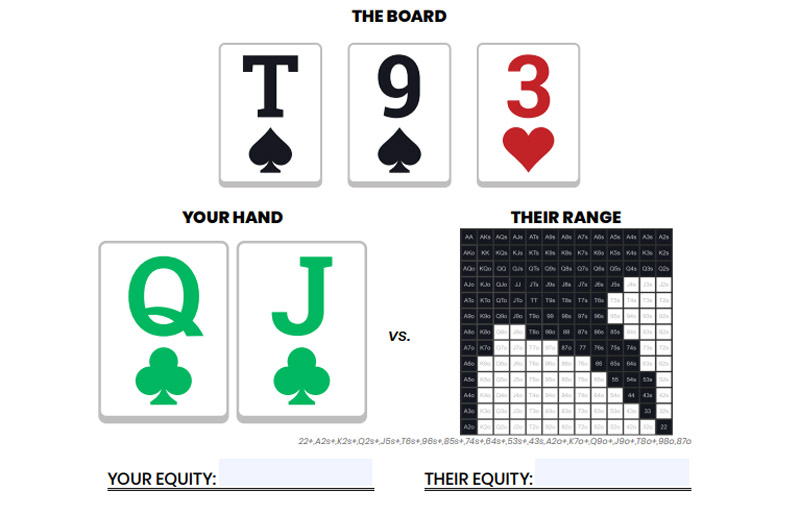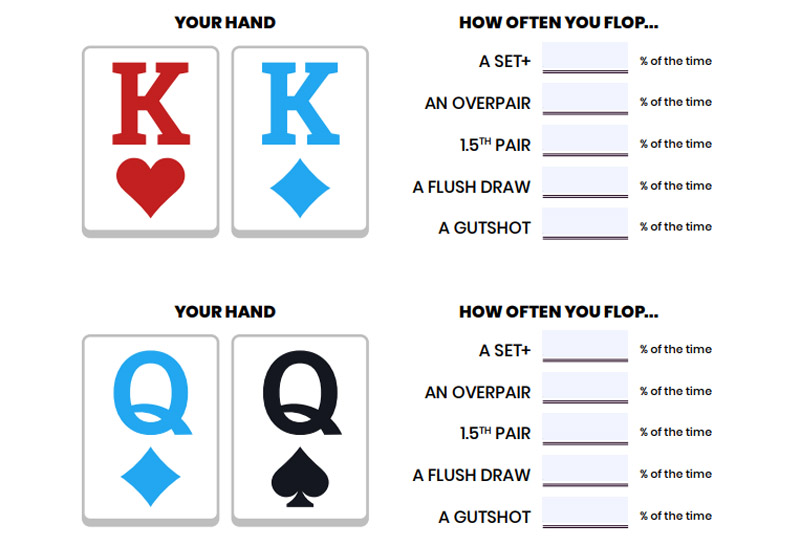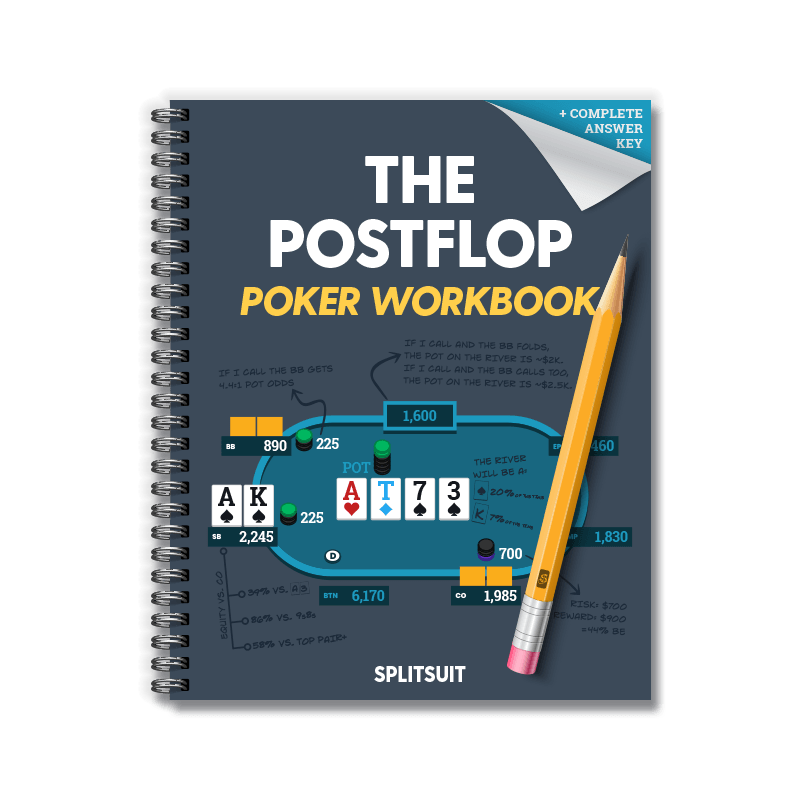You can go about learning poker in many different ways. Each person has a particular type of approach that’s best suited for their information processing style. At the end of the day, the way you acquire knowledge doesn’t really matter, so long as you can do it in an efficient way that will ensure the information stays with you.
James “SplitSuit” Sweeney has been producing all sorts of training materials for years now, but his workbooks take a rather unique place in this space. Fashioned after old-school textbooks, they cover a particular segment of Hold’em broken down into a number of smaller chunks. Instead of learning by reading or watching, you’re adopting the new information by solving tasks.
The latest in SplitSuit’s series is the Postflop Poker Workbook, which represents a sequel of sorts to his Preflop Workbook. It is geared more towards advanced and intermediate players who already have solid foundations as well as those who have successfully completed the first book and are now looking for new challenges.
What’s Inside the Postflop Poker Workbook?
As you could probably infer from the title, the latest workbook focuses on the math that comes into play once all the preflop betting is done. If you’ve had the opportunity to work through any of SplitSuit’s earlier books, you’ll already be familiar with the main concept.
The basic premise is that you’re introduced to a certain concept, which is briefly explained, and then you need to use poker software such such as Flopzilla or Equilab to come up with right answers to a series of questions.
The idea is to learn by doing. As you progress through these different tasks and try your best to come up with answers, you’re bound to memorize some of it. Instead of just watching or reading, you take an active part in the learning process, which is harder and more time-consuming but also much more effective in the long run.
So, what areas do exercises inside the Postflop Poker Workbook actually cover?
- Postflop equities (hand vs. hand, hand vs. range, and range vs. range)
- Flop types’ likelihoods (monotone, two-tone, paired, etc.)
- Combos (understanding different combinations and how they relate to different flop textures)
- Ranges vs. flops
- Hitting turns and rivers
- Stack to Pot Ratio (SPR)
- Pot geometry
- Understanding runouts & floating
- Auto-profit bets and raises
- River plays
- Value hands
As you can see, the Postflop Poker Workbook covers a rather wide area of the game and you’ll find hundreds of exercises inside. I’d say that this method of learning is best suited for those ready to really apply themselves to studying because you’ll gain nothing by just skimming through the book. You will need to sit down and actually solve the problems inside.

Pot Geometry
Making Most Out of the Postflop Workbook
I won’t go through every single section of the workbook in this review, as that would make it way too long. However, to help you decide if this is something you should invest in, I’ll try to give you some idea of what to expect.
First of all, you should probably go through the workbook in the way it is presented. This is what Sweeney suggests, after all. If you don’t, since lessons all connect to one another, you could otherwise miss out on an important concept or an idea that you’ll need to complete some tasks later.
Secondly, don’t try to get through too much of the Postflop Poker Workbook at once.
Although you’ll get better at solving these tasks as you move along, they simply take time, especially later on when things get more complicated. The idea isn’t to just run through them but you want for the things to stick and the best way to achieve that is by doing them a few at the time while really thinking about what you’re doing.
For example, the first exercises that deal with postflop equities are fairly simple and won’t take you too long. You can do a few more of these to begin with and get a good feeling for what’s to come.

Hand vs. range analysis
As you move on to the flop analysis, things get more complicated. This is a very important segment as knowing the frequency with which certain flops occur is very important for planning out your actions in the hand. So, try to spend more time with these exercises and to really develop an understanding of the underlying math.
The deeper you go with the workbook, the more complex and time-consuming these tasks get, so try not to force anything or speed through it. Do it at your own pace, plan for your study sessions, and make most out of the resources you’ve been offered.
Summary: Postflop Workbook Major Takeaways
The Postflop Poker Workbook focuses on several important areas of the postflop play and aims to make you better at things such as:
- Finding good value spots
- Properly sizing your bets with regards to the pot size
- Developing an understanding of how various combos correlate with different board textures
- … and much more

Clearly, there is a lot to take in and “SplitSuit” himself believes that even if you absorb and apply 10% of the knowledge contained inside, the workbook will pay for itself (it costs just $49). I tend to agree with this statement (although I also see no reason why you’d be “limited” to just 10%.
After all, this is a poker workbook so there is nothing stopping you from reviewing it as many times as you want. With every new run-through, you’re bound to do better and absorb more information than the previous time. If you’re really committed to getting better at poker, this is exactly what you need to do.
In order to get the most out of the workbook and most bang for your buck, I’d recommend that you keep doing the exercises contained inside until you can get almost every single one of them right. As you do it, you’re guaranteed to see significant improvements to your poker results. Naturally, you might not feel like doing hard poker study all the time, but as we all know, it takes hard work and diligence to take your poker game to the next level and see better results.







